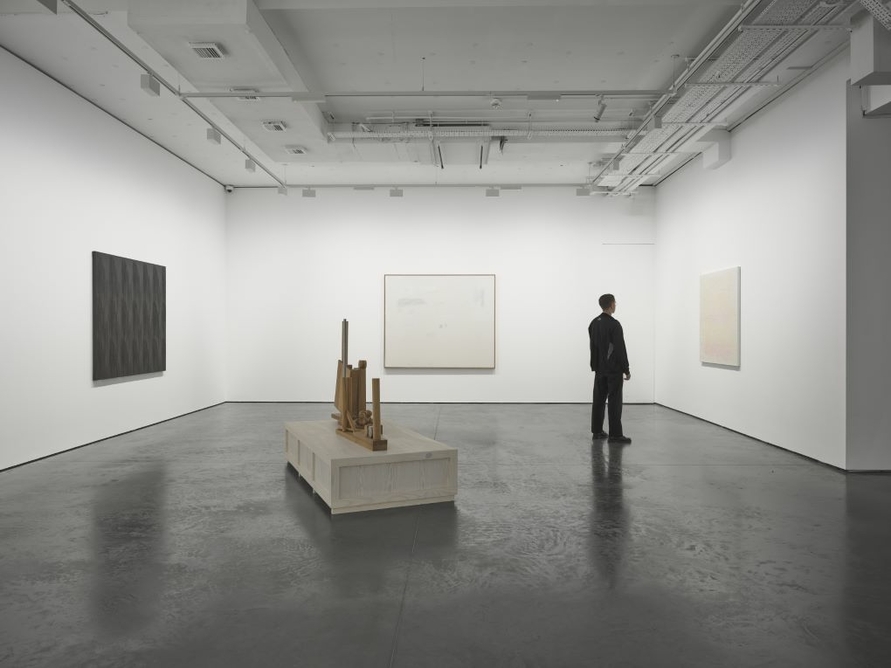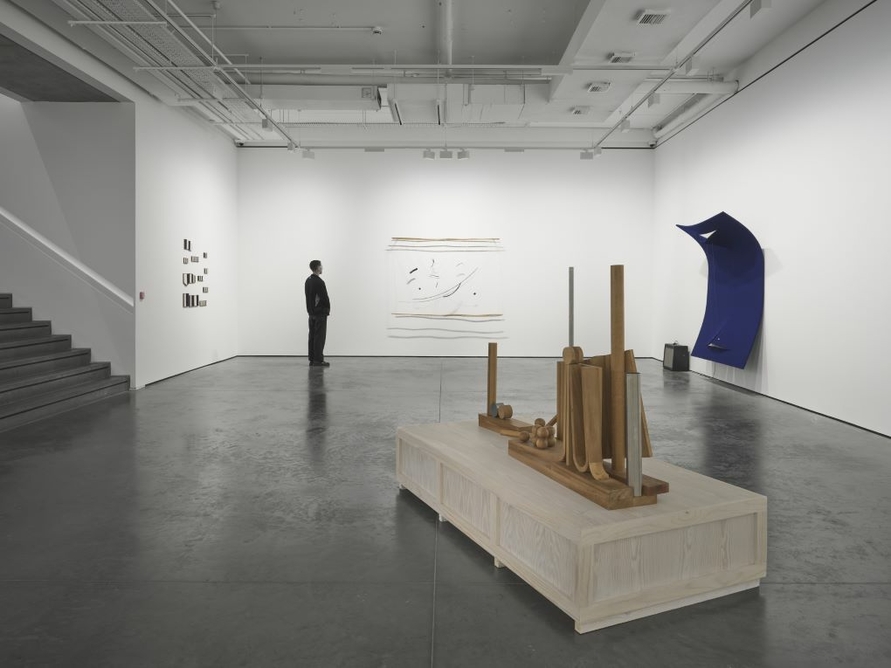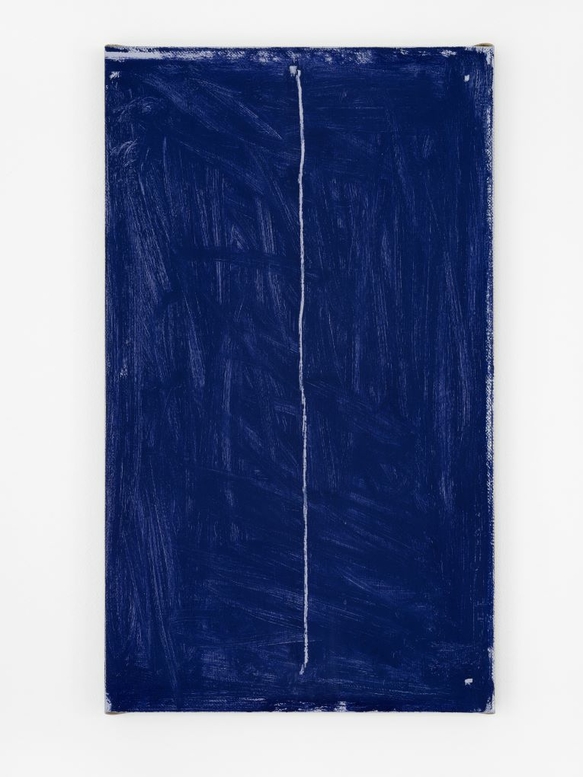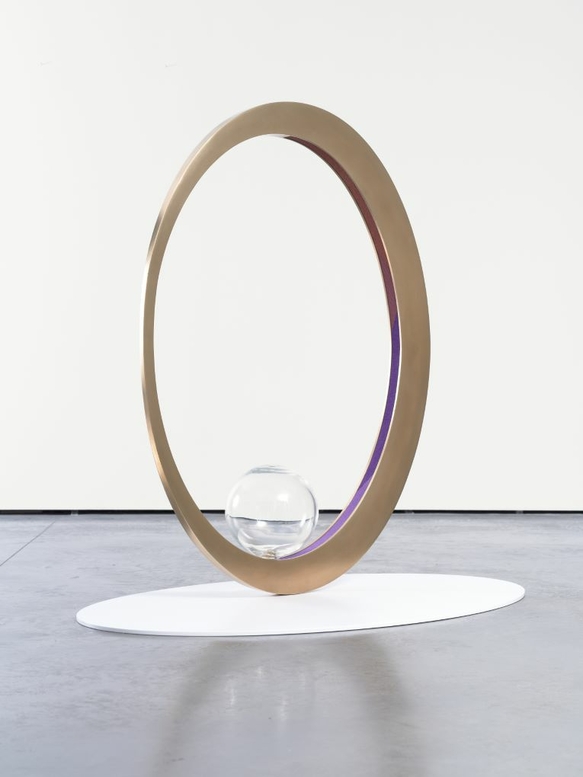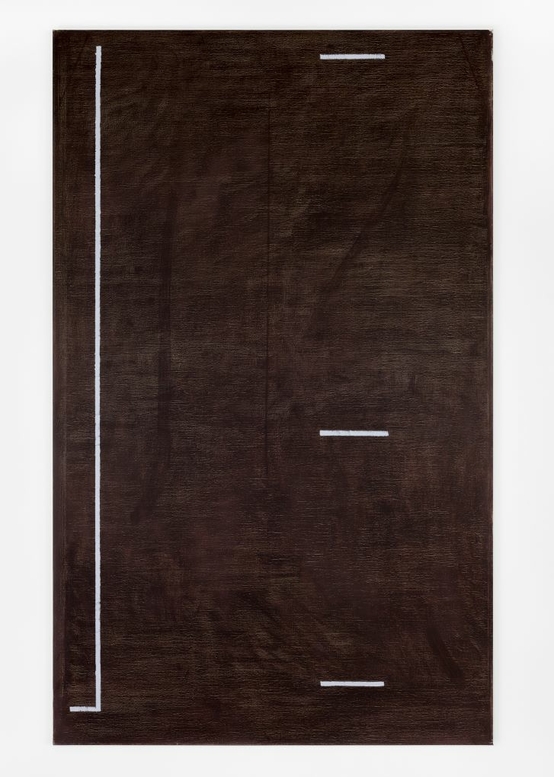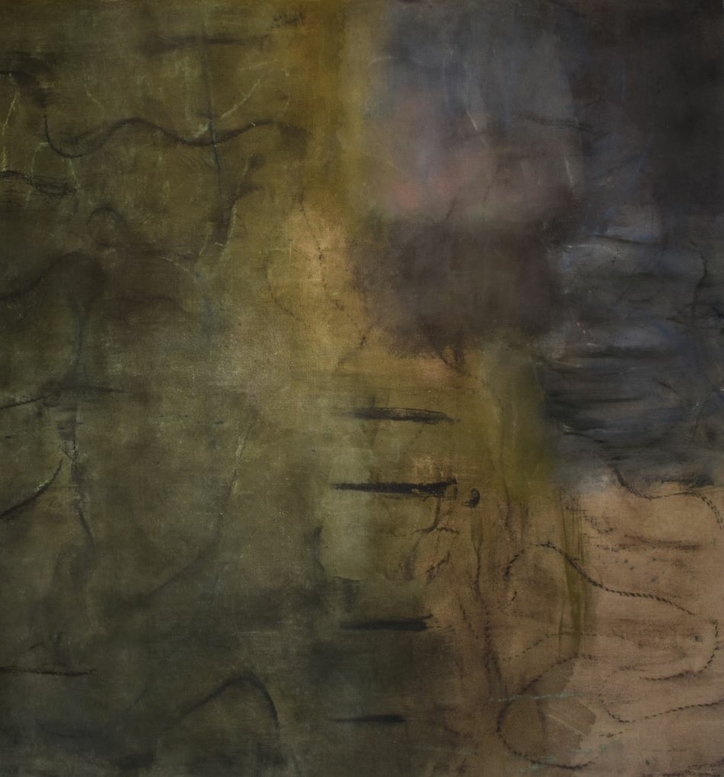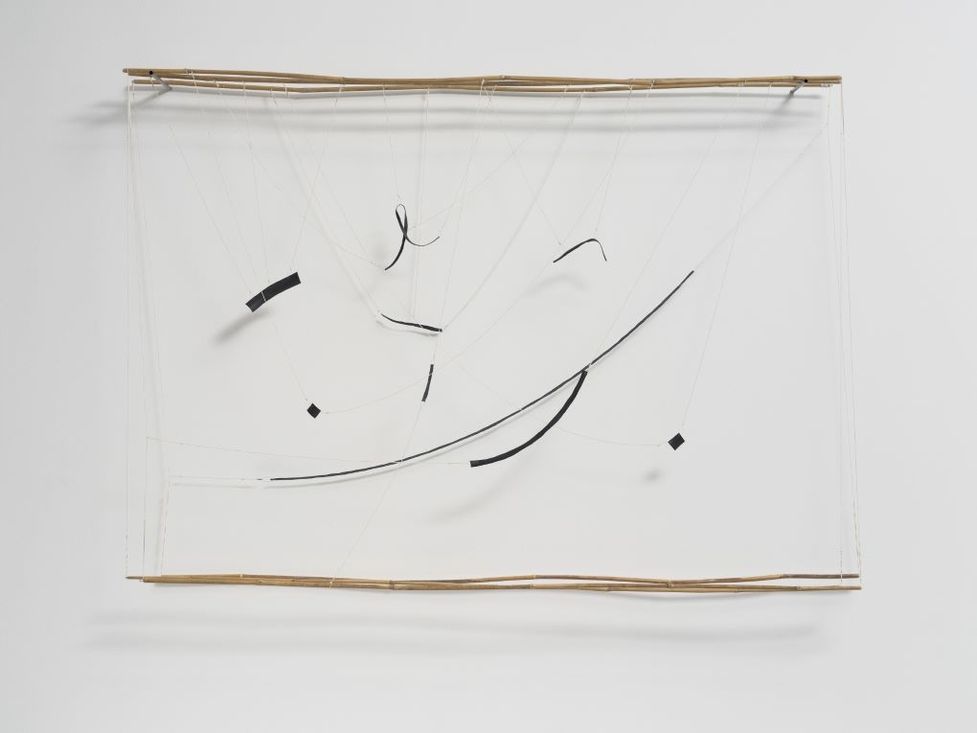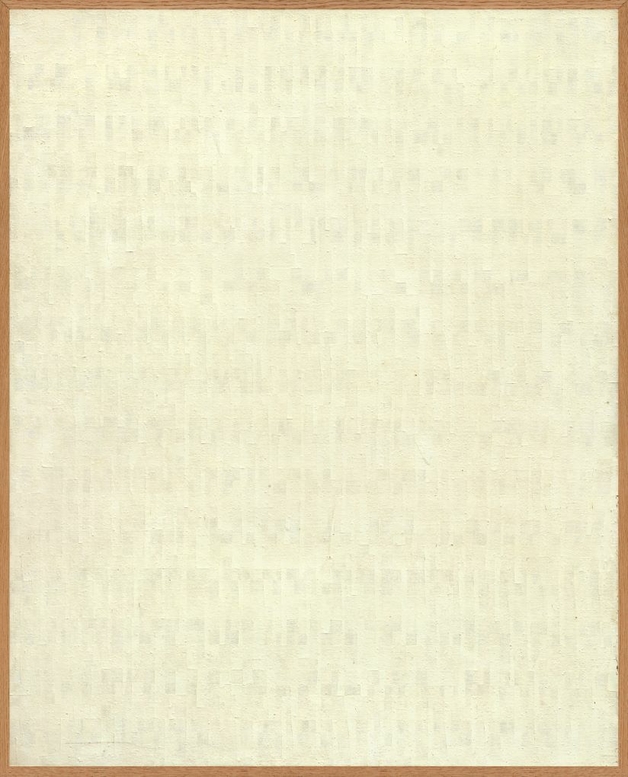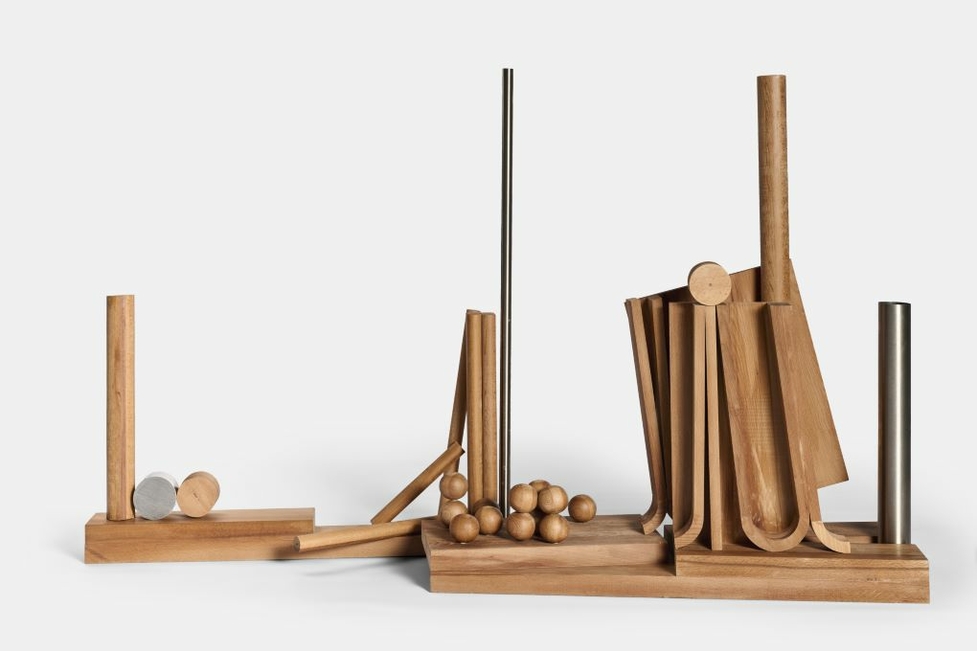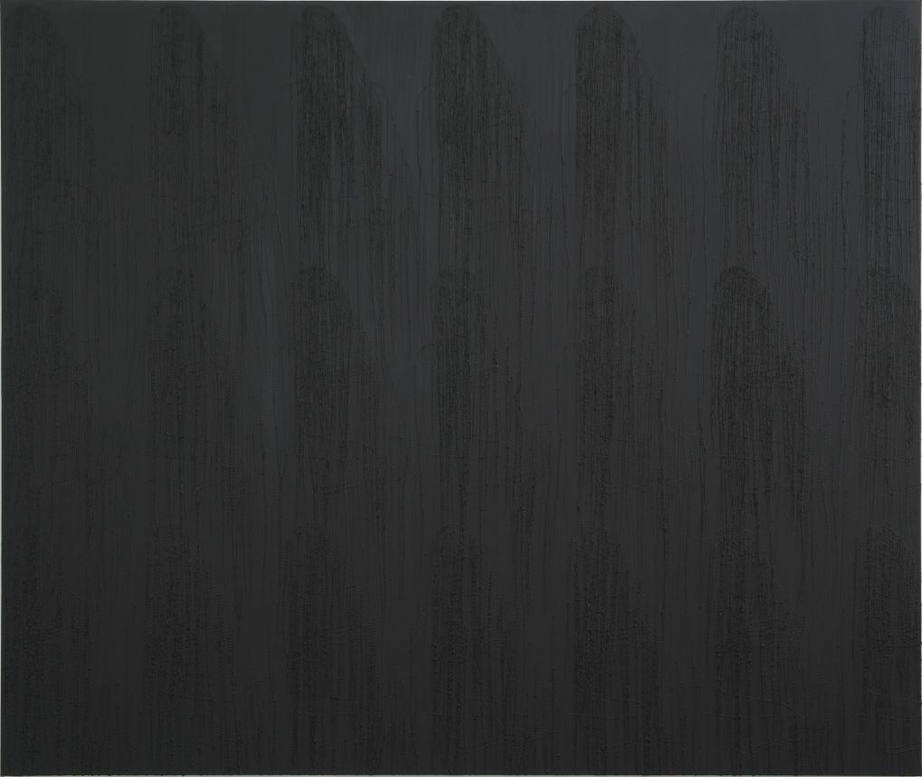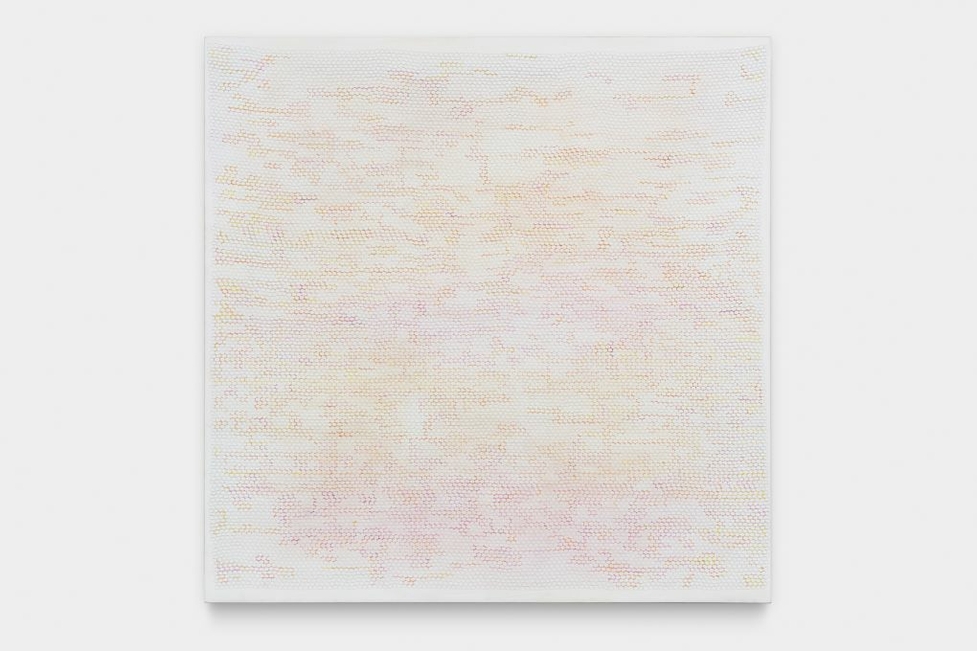Lifelines
Goodman Gallery is pleased to announce Lifelines, a group exhibition featuring works by Ghada Amer, Astha Butail, Monique Frydman, Jared Ginsburg, Kapwani Kiwanga, Liza Lou, Unathi Mkonto, Chung Sang-Hwa, Naama Tsabar and John Zurier. Lifelines brings together artists from across generations and geographies who engage the aesthetics of minimalism through a tactile and embodied approach. The exhibition reflects on mark-making, not as a gesture for personal expression, but a reflection on memory, politics and meditative presence.
In the history of Minimalism, the mark was stripped of emotion and replaced by systems, units and industrial form, distilling art to its most “objective” means. In contrast, the artists in Lifelines reclaim the mark and imbue it with material complexity through process and experimentation. Through slow processes, scraping, stitching, rubbing, folding and assembling, these works explore time and labour, transforming the surface into a space of intimate dialogue.
Kapwani Kiwanga and Ghada Amer explore power and its historical effects on our contemporary culture, particularly in Amer’s work through a more feminist lens. Kiwanga’s Transfer II is a large sculpture of a ring made from bronze and palladium, with a transparent glass ball balanced on it. The work reflects on colonial extraction and the impact of commerce on society. Amer’s stitched canvases operate in a similarly layered space. In ANOTHER BLACK PAINTING, the outlines of women’s bodies are stitched in black thread on black ground, visible only in shifting light, as an attempt to reframe female agency and desire.
Artworks
About

Naama Tsabar
Naama Tsabar’s practice fuses elements from sculpture, music, performance and architecture. Her interactive works expose hidden spaces and systems, reconceive gendered narratives, and shift the viewing experience to one of active participation. Tsabar draws attention to the muted and unseen by propagating sound through space and sculptural form. Between sculpture and instrument, form and sound, Tsabar’s work lingers on the intimate, sensual and corporeal potentials within this transitional state. Collaborating with local communities of female identifying and gender non-conforming performers, Tsabar writes a new feminist and queer history of mastery.
Naama Tsabar (b. 1982, Israel) lives and works in New York. She received her MFA from Columbia University in 2010. Solo exhibitions and performances of Tsabar have been presented at the Solomon R. Guggenheim Museum (New York), Museum of Art and Design (New York), The High Line Art (New York), Nasher Museum (Durham, NC), Kunsthaus Baselland (Switzerland), Palais De Tokyo (Paris), Prospect New Orleans, Tel Aviv Museum of Art, The Herziliya Museum for Contemporary Art in Israel, MARTE-C (El Salvador), CCA Tel Aviv (Israel), Faena Buenos Aires, Frieze Projects New York, Kasmin (New York), Paramo Gallery (Guadalajara), Dvir Gallery (Israel and Brussels), Spinello Projects (Miami) Shulamit Nazarian (Los Angeles). Selected group exhibitions featuring Tsabar’s work include, The Andy Warhol Museum, The Jewish Museum of Belgium, Ballroom Marfa, Schirn Kunsthalle in Frankfurt, Elevation 1049 Gstaad (Switzerland), TM Triennale, Hasselt Genk, Belgium, ‘Greater New York’ 2010 at MoMA PS1, Museum Dhondt-Dhaenens (Belgium), The Bucharest Biennale for Young Artists, Hessel Museum of Art at CCS Bard, Casino Luxembourg (Luxembourg), ExtraCity in Antwerp (Belgium). Tsabar’s work has been featured in publications including ArtForum, Art In America, ArtReview, ARTnews, The New York Times, New York Magazine, Frieze, Bomb Magazine, Art Asia Pacific, Wire, and Whitewall, among others.
Tsabar’s work is held in the permanent collections of the Los Angeles County Museum of Art, Solomon R. Guggenheim Museum, Pompidou Centre, Seattle Art Museum, San Francisco Museum of Modern Art, The Bass Museum, PAMM, Kadist Collection, Jimenez-Colón Collection, Tel Aviv Museum, Israel Museum, and Coleccion Dieresis.
Download full CV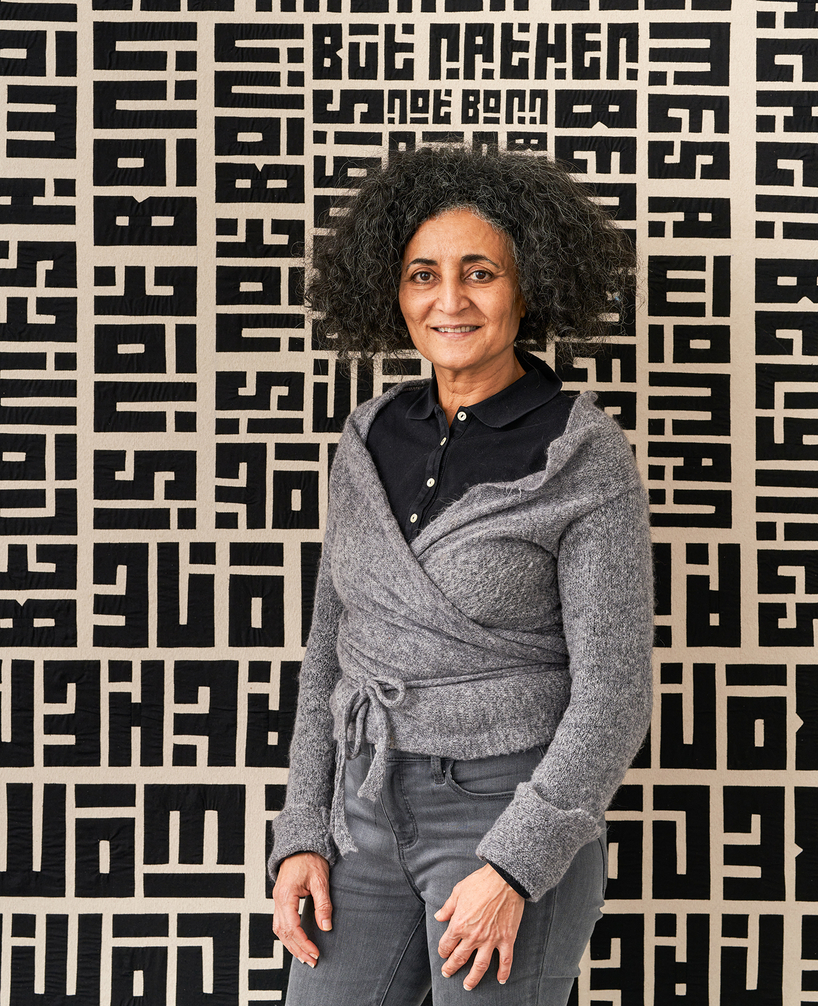
Ghada Amer
Ghada Amer was born in Cairo, Egypt in 1963 and moved to Nice, France when she was eleven years old. She remained in France to further her education and completed both of her undergraduate requirements and MFA at Villa Arson École Nationale Supérieure in Nice (1989), during which she also studied abroad at the School of the Museum of Fine Arts in Boston, Massachusetts in 1987. In 1991 she moved to Paris to complete a post-diploma at the Institut des Hautes Études en Arts Plastiques. Following early recognition in France, she was invited to the United States in 1996 for a residency at the University of North Carolina, Chapel Hill. She has since then been based in New York.
Amer’s wide-ranging practice spans painting, cast sculpture, ceramics, works on paper, as well as garden and mixed-media installations. Further, she often collaborates with her long-time friend Reza Farkhondeh. Recognising both that women are taught to model behaviors and traits shaped by others, and that art history and the history of painting in particular are shaped largely by expressions of masculinity, Amer’s work actively subverts these frameworks through both aesthetics and content. Her practice explores the complicated nature of identity as it is developed through cultural and religious norms as well as personal longings and understandings of the self.
Amer’s work is in public collections around the world including The Arab Museum of Modern Art, Doha; the Art Institute of Chicago, Chicago, IL; the Barjeel Art Foundation, Sharjah; the Brooklyn Museum of Art, New York, NY; Centre Georges Pompidou, Paris; Crystal Bridges Museum of American Art, Bentonville, AR; the Guggenheim Museum, Abu Dhabi; the Israel Museum, Jerusalem; the Samsung Museum, Seoul; among others. Among invitations to prestigious group shows and biennials—such as the Whitney Biennial in 2000 and the Venice Biennial of 1999 (where she won the UNESCO Prize), 2005 and 2007—she was given a mid career retrospective at the Brooklyn Museum of Art in New York in 2008. Multiple institutions across Marseilles, France are currently co-organising a retrospective for 2022 that will travel to the United States and Asia.
Download full CV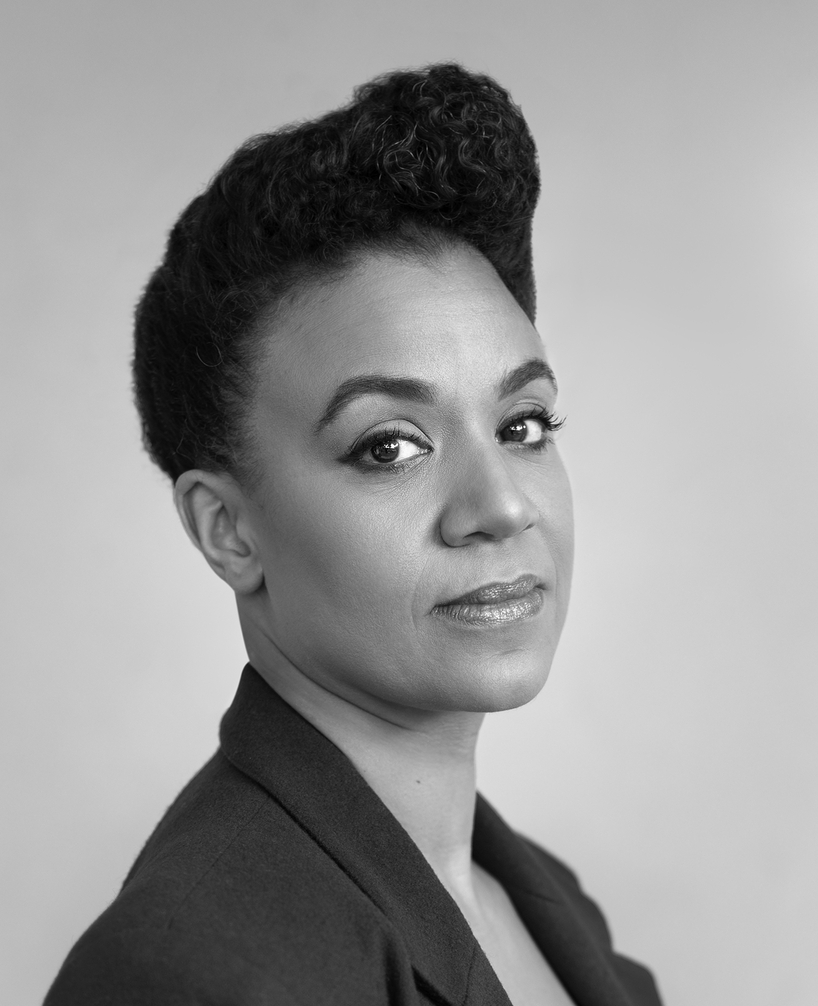
Kapwani Kiwanga
Kapwani Kiwanga (b. 1978, Hamilton, Canada) traces the pervasive impact of power asymmetries by placing historic narratives in dialogue with contemporary realities, the archive, and tomorrow’s possibilities. Her work is research-driven, instigated by marginalised or forgotten histories, and articulated across a range of materials and mediums including sculpture, installation, photography, video, and performance. Kiwanga co-opts the canon; she turns systems of power back on themselves, in art and in parsing broader histories. In this manner Kiwanga has developed an aesthetic vocabulary that she described as “exit strategies,” works that invite one to see things from multiple perspectives so as to look differently at existing structures and find ways to navigate the future differently.
In 2024, Kiwanga’s acclaimed solo presentation titled ‘Trinket’, for the Canadian Pavilion, at the 60th Venice Biennale, commissioned by the National Gallery of Canada, debuted a site-responsive sculptural installation made of conterie, also known as seed beads. The installation examined Global trade and transactional relations between Africa and Europe and continues the artist’s concerns with how diverse forms of power are manifested.
In 2023, Kunstmuseum Wolfsburg presented Kiwanga’s first comprehensive mid-career retrospective, ‘The Length of the Horizon’. This show includes her memorable Venice Biennale installation Terrarium (2022).
In 2020, Kiwanga received the Prix Marcel Duchamp (FR). She was also the winner of the Frieze Artist Award (USA) and the annual Sobey Art Award (CA) in 2018.
Selected group exhibitions include: Whitechapel Gallery, London (UK); Serpentine Galleries, London (UK); Yuz Museum, Shanghai (CHN); MOT – Museum of Contemporary Art Tokyo (JPN); Museum MMK für Moderne Kunst, Frankfurt (DE); Museum of African Contemporary Art Al Maaden – MACAAL, Marrakech (MAR); National Gallery of Canada, Ottawa (CA); Contemporary Arts Museum, Houston (USA); Hammer Museum, Los Angeles (USA); Centre Pompidou, Paris (FR); Musée d’art contemporain de Montréal, Montreal (CA); ARoS Aarhus Art Museum, Aarhus (DK) and MACBA, Barcelona (ESP).
Solo exhibitions include: Copenhagen Contemporary, Haus der Kunst, Munich; Kunstinstituut Melly – Center for Contemporary Art, Rotterdam; Kunsthaus Pasquart, Biel/Bienne; MIT List Visual Arts Center, Cambridge; Albertinum museum, Dresden; Artpace, San Antonio; Esker Foundation, Calgary; Tramway, Glasgow International; Power Plant, Toronto; Logan Center for the Arts, Chicago; South London Gallery, London and Jeu de Paume, Paris.
Collections include: NOMAS Foundation, Rome, Italy; FRAC PACA, Marseille, France; Guggenheim Museum, New York, USA; Museo de Arte Contemporanea de Castilla y Léon, MUSAC, León, Spain; Musée départemental d’art contemporain de Rochechouart, Rochechouart, France; National Gallery of Canada, Ottawa, Canada; Musée d’Art moderne de la Ville de Paris, Paris, France; Kadist Art Foundation Paris/San Francisco, France and USA; and Mead Art Museum, Amherst, USA.
Kiwanga lives and works in Paris.
Download full CV


